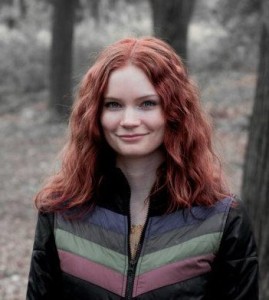The Circle, by Dave Eggers: I think that in order to accurately gauge whether this is prescient dystopia or heavy-handed…I have to try to imagine reading it back when it came out in 2013. And I think in 2013 it would have seemed dark but clearly exaggerated, while now it seems…pretty close to the actual state of things. So I’ll say it was, indeed, unfortunately prescient, and also thoroughly enjoyable, even though there was one comparison (or three, really) at the end that was a little too on the nose. ETA: the more I learn about Facebook the more accurate The Circle seems, which I understand is likely because Eggers *based* the novel on places like Facebook, but it still gives me the heebie jeebies.
Homegoing, by Yaa Gyasi: Engrossing storytelling, but the writing didn’t amaze me, even feeling pedestrian in places. And the end of each chapter felt abrupt, even though I don’t have anything against linked stories/novels in stories generally. I like the overall structure, but I think the book would have benefitted from spending more time with each character. There would also be less need for exposition from the descendant characters, which felt sort of wedged in to let the reader know how each new character related to the previous one.
The Dreamers, by Karen Thompson Walker: I loved The Age of Miracles and I like that this similarly deals with time behaving in unusual ways (though that’s not quite the right way of putting it – it’s more like time being altered by physical processes, like the slowing of the earth’s rotation or a sleeping sickness plague). I did find the writing beautiful in most places and then curiously sentimental in a few, and the ending left me a little lukewarm. I don’t mind when an author has a neat, intriguing premise but an ending that doesn’t quite match it, but I felt like this one petered out more than it had to. I think I feel that way because the sleeping sickness wasn’t the backdrop to a story; it was the story itself, so I was hoping there would be an ending to match. But overall I was absorbed and would recommend.
*I’m finding it hard not to be bland. Maybe I’m subconsciously hovering over my opinions, afraid to let them be seen? Then again, it’s not so hard to believe that three books in a row would engross but not stun me.
The Water Cure, by Sophie Mackintosh: I spoke too soon about the monotony of my responses to books lately, because I loved this. At first I was wary because I’ve grown weary recently of very elliptical books, the coyness and crypticity, the meting out of vague details without really committing to anything. This is emphatically not that way; you have the sense that you know everything that characters know, and likely more. It reminded me strongly of the movie Dogtooth, but when I saw that I came away feeling cheated by never finding out what the parents’ motivations were for keeping their children away from the world. I don’t feel that with The Water Cure, whether it’s a change in me (and that seems likely: it seems all too obvious now why you might want to keep your children away from the world) or something about the book itself.
Trust Exercise, by Susan Choi: I received this galley inside of a tote bag at a party for the Center for Fiction’s new Brooklyn location. The writing and characters felt incredibly remote to me (perhaps by design, but I didn’t like it). When I started it, I kept thinking that the feeling it gave me reminded me of Serial (which I listened to recently for the first time), and I couldn’t figure out why (“high school,” “terrible events,” and “high schoolers that seemed older than I felt in high school” didn’t seem like a particularly strong trifecta of similarity) until I realized it was because the remoteness of the characters made it harder for me to feel immersed or to picture things – as if I were listening to a podcast instead of reading a book. (This hinges more on how I listen to podcasts than it does on potential differences in visualization based on spoken vs. written words.) Then I got to part two…which is hard to write about without spoilers. And that’s where I am now, so maybe I’ll have additional thoughts when I’m finished.



